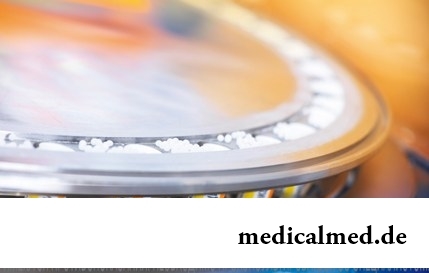





Akridilol
Application instruction:
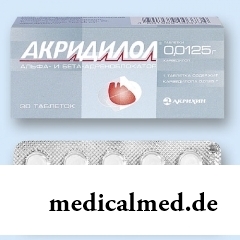 Akridilol – α1-адреноблокатор, β1-and β2-адреноблокатор with organoprotektorny and anti-proliferative action.
Akridilol – α1-адреноблокатор, β1-and β2-адреноблокатор with organoprotektorny and anti-proliferative action.
Form of release and structure
Dosage form – tablets: from white till white-creamy color, the easy mramornost of a color of a surface is possible; 6,25 mg: ploskotsilindrichesky, with risky and a facet; 12,5 mg: square with the rounded corners, convex from two parties, with an engraving of "AL1" on one party and a crosswise notch on another; 25 mg: oval, convex from two parties, with an engraving of "AL2" on one party and a partial notch on both parties (on 10 pieces in blisters, in a pack cardboard 3 blisters).
Contains in 1 tablet:
- Active agent: карведилол – 6,25 mg; 12,5 mg or 25 mg;
- Excipients: carboxymethylstarch of sodium, magnesium stearate, лудипресс LTsE (lactoses monohydrate and povidone).
Indications to use
- Essential arterial hypertension (as monodrug or in a combination with other antihypertensives, for example, diuretics or blockers of slow calcium channels);
- The Coronary Heart Disease (CHD), including with bezbolevy ischemia of a myocardium and unstable stenocardia;
- Stable, symptomatic, moderate and heavy chronic cordial insufficiency (the II-IV functional classes according to classification of the New York association of cardiologists of NYHA), including ischemic genesis (in a combination with diuretics and inhibitors of an angiotensin-converting enzyme, if necessary – along with cardiac glycosides).
Contraindications
Absolute:
- Sick sinus syndrome (including sinuatrial blockade);
- The expressed bradycardia (heart rate less than 50 beats per minute);
- The expressed arterial hypotension (systolic arterial pressure less than 85 mm hg);
- Atrioventricular (AV) blockade of II and III degrees (except patients with an artificial pacemaker);
- Cardiogenic shock;
- Acute and chronic heart failure in a stage of the decompensation demanding intravenous administration of inotropic means;
- Bronchospasms and bronchial asthma in the anamnesis;
- Clinically significant abnormal liver function;
- Lactose intolerance, glyukozo-galaktozny malabsorption, deficit of lactase;
- Age up to 18 years (due to the lack of data on efficiency and safety of use of Akridilol);
- Pregnancy (except for cases of vital need);
- Lactation (or feeding needs to be interrupted);
- Hypersensitivity to any component of drug.
Relative:
- Chronic obstructive pulmonary disease, including bronkhospastichesky syndrome;
- AV blockade of the I degree;
- Hypoglycemia;
- Myasthenia;
- Thyrotoxicosis;
- Diabetes mellitus;
- Occlusal diseases of peripheral vessels;
- Printsmetal's stenocardia;
- Depression;
- Renal failure;
- Pheochromocytoma or suspicion on its existence;
- Extensive surgical interventions, general anesthesia;
- Psoriasis.
Route of administration and dosage
Akridilol it is necessary to accept inside, regardless of meals, washing down with enough liquid.
The recommended dosing mode if there are no other appointments:
- Essential hypertensia: treatment begin 12,5 mg with a daily dose, 2 days later a dose raise to 25 mg in 1 reception. If expressiveness of effect is not enough, the dose continues to be increased with the minimum intervals of 2 weeks to the maximum admissible 50 mg in 1 or 2 receptions;
- Coronary heart disease: the initial dose makes on 12,5 mg 2 times a day, 2 days later a dose 2 times a day raise to 25 mg. If there is a need, a dose bucketed not less than 2 weeks to the most admissible continue to increase 100 mg in 2 receptions;
- Chronic heart failure: the dose is selected individually; the initial recommended dose makes on 3,125 mg (½ tablets of 6,25 mg) 2 times a day for 2 weeks. Further, on condition of good tolerance of drug, the dose is raised at first to 6,25 mg by 2 times a day, then – to 12,5 mg 2 times a day, then – to 25 mg 2 times a day. The dose is increased with the minimum intervals of 2 weeks to maximum which is well transferred by the patient.
The highest recommended doses: for patients with the heavy chronic heart failure (CHF), and also for patients from easy and moderate HSN and with a body weight less than 85 kg – on 25 mg 2 times a day; for patients from easy and moderate HSN, but with body weight more than 85 mg – on 50 mg 2 times a day.
Patients who receive diuretics, cardiac glycosides or inhibitors of the angiotensin-converting enzyme (ACE) need to correct their doses prior to Akridilol's reception.
Increase in a dose of a karvedilol has to be carried out with care. The day before the doctor examines the patient to reveal possible increase of symptoms of a vazodilatation or HSN. In case of a delay in an organism of liquid or increase of symptoms of HSN it is necessary to reduce a dose of diuretics, the dose decline of Akridilol or his temporary cancellation can sometimes be required.
Vazodilatation symptoms usually manage to be eliminated thanks to reduction of a dose of diuretic. If signs remain, it is necessary to lower an APF inhibitor dose (if the patient accepts it), and then, if necessary – Akridilol's dose. In these cases it is not necessary to increase a dose of a karvedilol until expressiveness of symptoms of arterial hypotension or HSN decreases.
In case of need to interrupt treatment more than for 1 week, it is necessary to resume administration of drug from a smaller dose, gradually increasing it according to the recommendations described above. If therapy was interrupted more than for 2 weeks, it is necessary to resume reception from a dose of 3,125 g 2 times a day, gradually raising a dose, adhering to the main recommendations.
Side effects
The undesirable reactions noted at patients with chronic heart failure:
- From the central nervous system: very often (more than 10% of cases) – a headache and dizziness (arise in an initiation of treatment, usually easy more often), a depression, increased fatigue, an adynamy;
- From cardiovascular system: often (1-10% of cases) – the expressed lowering of arterial pressure, postural hypotension, bradycardia, hypostases (including the bodies depending on situation peripheral and generalized hypostases, a liquid delay, crotch hypostases, a hypervolemia, hypostases of the lower extremities); infrequently (0,1-1% of cases) – AV blockade and heart failure during increase in a dose, syncopal (including presinkopalny) states;
- From system of a hemopoiesis: seldom (0,01-0,1% of cases) – thrombocytopenia; very seldom (less than 0,01% of cases) – a leukopenia;
- From digestive tract: often – diarrhea, nausea, vomiting;
- From a metabolism: often – a hypercholesterolemia, increase in body weight; patients with a diabetes mellitus have disturbances of glycemic control, a hypoglycemia or a hyperglycemia;
- Others: often – vision disorders; seldom at patients with a diffusion vasculitis and/or functional disturbance of kidneys – a renal failure, a renal failure.
Undesirable reactions which arose at patients with arterial hypertension and an ischemic heart disease:
- From the central nervous system: a headache, the general weakness, dizziness (arise in an initiation of treatment, usually easy more often); infrequently – sleep disorders, lability of mood, paresthesia;
- From cardiovascular system: often – postural hypotension, bradycardia; infrequently – syncopal states (especially at the beginning of therapy), stenocardia (thorax pain), peripheral hypostases, AV blockade, disturbances of peripheric circulation (a cold snap of extremities, Reynaud's syndrome, an aggravation of a Charcot's syndrome), aggravation or development of symptoms of heart failure;
- From respiratory system: often at predisposed patients – an asthma, a bronchospasm; seldom – a nose congestion;
- From digestive tract: often – dispepsichesky frustration (including diarrhea, abdominal pains, nausea); infrequently – vomiting, a lock;
- From integuments: infrequently – a skin itch, rash, a small tortoiseshell, dermatitis;
- Laboratory indicators: very seldom – a leukopenia, thrombocytopenia, increase in activity of hepatic transaminases;
- Others: often – reduction of a slezootdeleniye, irritation of eyes, extremity pains; infrequently – vision disorders, decrease in a potentiality; seldom – dryness in a mouth, disturbances of an urination; very seldom – a grippopodobny syndrome, sneezing, an exacerbation of psoriasis, allergic reactions.
Special instructions
At HSN Akridilol it is necessary to use with care in a combination with cardiac glycosides as perhaps excessive delay of atrioventricular conductivity.
With extra care patients need to select a dose of drug with the accompanying renal failures.
Patients with a chronic obstructive pulmonary disease who do not receive inhalation or peroral antiasthmatic means Akridilol can appoint only in those cases if advantages of its use exceed possible risks. And at each increase in a dose patients have to be in an initiation of treatment under careful observation. In case of initial signs of a bronchospasm it is necessary to lower a dose of a karvedilol.
At patients with a diabetes mellitus drug can weaken and even to mask hypoglycemia symptoms, especially tachycardia. At patients with a diabetes mellitus and HSN disturbance of glycemic control is possible.
Akridilol, as well as other β-adrenoblockers, can reduce expressiveness of symptoms of a thyrotoxicosis.
Extra care should be observed when carrying out surgical intervention under the general anesthesia as summation of negative effects of a karvedilol and means of the general anesthesia is possible. The patient shall warn the anesthesiologist about the previous therapy by Akridilol.
In case of an urezheniye of heart rate less than 55 beats per minute it is necessary to lower a drug dose.
At patients who along with Akridilol receive blockers of slow calcium channels (for example, diltiazem or verapamil) or other antiarrhytmic means, it is necessary to monitorirovat the electrocardiogram and arterial pressure periodically.
Prior to drug use by the patient with a pheochromocytoma it is necessary to appoint α-adrenoblocker..........
Patients who use contact lenses need to remember that medicine can promote reduction of amount of the lacrimal liquid.
Akridilol it is not necessary to cancel sharply. Therapy needs to be stopped gradually, reducing a dose once a week, especially to patients with an ischemic heart disease.
During treatment it is forbidden to take alcohol, it is necessary to be careful when driving and performing potentially dangerous works demanding the increased speed of response and high concentration of attention.
Medicinal interaction
- Digoxin: its concentration approximately increases by 15%, delay of atrioventricular conductivity is possible;
- Amiodaronum, diltiazem, verapamil and other antiarrhytmic means: the risk of disturbance of AV conductivity can increase;
- The cyclosporine received orally: its concentration increases;
- Rifampicin: plasma concentration of a karvedilol decrease and, as a result, its anti-hypertensive action decreases;
- Amiodaronum: there is a risk of strengthening of β-adrenoceptor blocking action;
- Fluoxetine: the average value of total concentration of a karvedilol increases by 77%, however significant clinical effects were not noted;
- Insulin, peroral hypoglycemic means: their hypoglycemic action amplifies, hypoglycemia symptoms, especially tachycardia can weaken or mask (it is regularly necessary to control the content of glucose in blood);
- The drugs reducing the maintenance of catecholamines (for example, monoamine oxidase inhibitors, Reserpinum): the risk of development of the expressed bradycardia and/or arterial hypotension increases;
- Clonidine: anti-hypertensive and bradikardichesky effects are exponentiated;
- Blockers of slow calcium channels: separate cases of disturbances of conductivity are noted (seldom – with disturbances of indicators of a hemodynamics);
- Anti-hypertensive means: their effects, including collateral can amplify;
- Means for the general anesthesia: there is a risk of synergistic negative inotropic action (it is necessary to watch carefully the main vital signs);
- Non-steroidal anti-inflammatory drugs: can increase arterial pressure and reduce control of arterial pressure;
- Bronchodilators (agonists of β-adrenoceptors)))))))))): their bronkholitiruyushchy effect decreases.
Terms and storage conditions
To store at a temperature not above 25 °C in the dry and protected from light place unavailable to children.
Period of validity – 3 years.
The educated person is less subject to brain diseases. Intellectual activity promotes formation of the additional fabric compensating sick.

Epilepsy is one of widespread neurologic diseases. To parents, whose children suffer from this illness, it is necessary...
Section: Articles about health
On the head of the person about one million hair follicles, or as they are called still, hair bulbs are located. At the time of the birth most of them is in the "sleeping" state, but within several weeks follicles become more active, and from them begin р...
Section: Articles about health
Statistically, in Russia about 34% of citizens smoke. Most of consumers of tobacco has problems with health sooner or later. Not only smokers, but also their relatives suffer. Besides, cigarettes are expensive, and need of their acquisition goes a heavy burden on the budget of thousands of Russian families. Many people dream to refuse harmful tendency, but everyone manages to make it not: nicotine addiction is affectionate and to get rid of it not easy....
Section: Articles about health
Small appetite at the child – the complaint which pediatricians should hear practically from each mother. Most often it is carried to разр...
Section: Articles about health
Any of us is not insured from a heavy illness of the loved one. Happens and so that someone from family members becomes the bed patient, and remains in such state for a long time. It extremely suppresses both the most injured, and all it to...
Section: Articles about health
Many of us, probably, noticed more than once that from intellectual loadings at some point the brain as though "overheats" and "assimilation" of information is strongly slowed down. Especially this problem urgent for persons of age becomes more senior than fifty years. "Already badly I think", "the head will burst now", "memory as if is disconnected" - here that wants to be told at the time of information overload....
Section: Articles about health
Sugar - the digestible refined product which is not of special value for an organism of the modern person. Use...
Section: Articles about health
Partial and the more so full loss of hearing significantly reduces quality of life. Difficulties with communication lead to loneliness and isolation. The person who badly hears experiences difficulties with social and professional implementation, quite often has problems in...
Section: Articles about health
For the city dweller the fitness is the most convenient sport. It is enough to acquire the subscription to the gym to get access to various apparatuses and an opportunity to train under the leadership of the experienced consultant. Many consider fitness the best way of maintenance of physical shape and receiving dynamic loads which the people occupied preferential with brainwork so need. Nevertheless, representations of most of consumers of similar services about специф...
Section: Articles about health
All got used long ago that, having addressed the plastic surgeon, it is possible to modify natural parameters of a figure or to reduce...
Section: Articles about health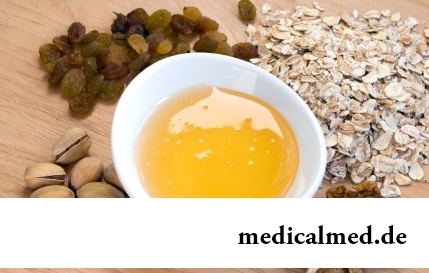
Let's begin with the fact that a separate illness which is called "adjournment of salts", just does not exist. In practice this household name of disbolism leading to development of a number of diseases. Pathological process consists that in an organism проис...
Section: Articles about health
80% of women at least once to lives complained of discomfortable feelings to breasts, consolidations and nagrubaniye. These are mastopathy symptoms. The mastopathy is characterized by change of a ratio between ferruterous and connective tissue tissues of mammary glands. It can lead to formation of cysts (a cystous mastopathy), gland consolidation (a fibrous mastopathy), or a combination of these processes (a fibrous and cystous mastopathy)....
Section: Articles about health
Today about 30 diseases, sexually transmitted are known. To wide circulation of these illnesses extremely with...
Section: Articles about health
Shops of household appliances offer us the huge choice of various devices for the house. Whether there are among this abundance devices which not only facilitate house work, but also help to keep health of the person? Of course, and we will tell about them today....
Section: Articles about health
Diapers for adults – individual one-time means of hygiene which in some situations is irreplaceable and from such situations any person is not insured. Though nobody perceives need of their use with enthusiasm, however without such means already problematic situation could be heavier....
Section: Articles about health
On health of the person physicians know about salutary action of animals long ago. About 7 thousand years ago great Hippocrates рекоменд...
Section: Articles about health
Tuberculosis – a serious infectious disease which development is caused by mycobacteria (Koch's bacilli). The illness is known from an extreme antiquity. Long time fight against it was considered as ineffective. Quite often the disease affected the whole families, and mortality from it was very much...
Section: Articles about health
Many parents of children at the age of 2-4 years face excessively whimsical behavior of the child. The kid exhausts constant crying and whims not only the parents, but also himself. In what the reasons of children's whims. And how to fight with them?...
Section: Slideshow
Memory is an ability of the central nervous system to fix, keep and as necessary to reproduce information on knowledge...
Section: Articles about health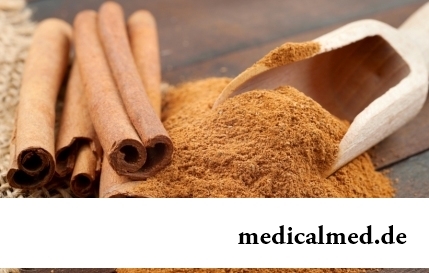
Ayurveda - the most ancient tselitelsky practice which came to us from India. It represents the doctrine about maintenance of physical, psychological and moral health of the person by means of the complex of procedures including a diet, cleaning of an organism, respiratory упр...
Section: Articles about health
The technique of acupuncture (acupuncture) is used in the medical purposes more than three and a half millennia. It is eurysynusic and recognized as official medicine in the majority of the developed countries of the world. Influence by fine needles on so-called points of acupuncture contributes to normalization of a metabolism and hormonal background, activates protective forces of an organism, has anesthetic and antiinflammatory effect, stabilizes a condition of mentality....
Section: Articles about health
The medicine promptly develops, and the fact that else quite recently it seemed by miracle can now. We are not surprised any more to the fact that sport...
Section: Articles about health
Not without reason doctors say that 90% of diseases begin or develop because of misoperation of intestines. Disturbance of its functions is connected with various factors among which the important place belongs to excessive "clutter" of an intestinal path. In an organism скаплив...
Section: Articles about health
Bathing in broths of medical flowers and plants (phytobathtub) was eurysynusic since Cleopatra who is a good judge in all that concerns beauty and health. And today phytobathtubs is the simple and available means allowing not only to remove nervous tension, but also to recover from many diseases. Grass bathtubs at treatment of cold, osteochondrosis, radiculitis, skin diseases, and also diseases of urinary tract and vessels are especially effective....
Section: Articles about health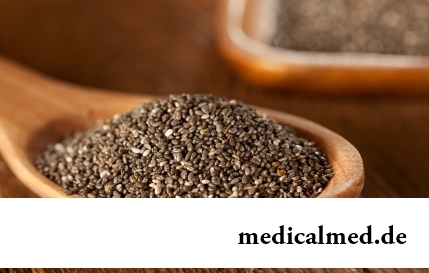
The chia plant, or the Spanish sage, is from South America. The indigenous people of the continent since ancient times used in food it семена:...
Section: Articles about health
Feeding by a breast - the integral part of ideal motherhood allowing to come into contact with the kid and to create to it healthy immunity since early years. Nevertheless, this important process in life of mother and child can be saddened laktostazy − by a delay of milts...
Section: Articles about health
Summer in the heat. Many are going to spend vacation abroad. Travelers the tender seas, rest on beaches wait, for sightseeing, campaigns on natural and cultural reserves. But, unfortunately, on vacation also problems with health can wait for us. On a foreign trip it is possible to face also diseases which not only will spoil long-awaited issue, but also will force to be treated within long months after its termination. To be insured completely from troubles of it a sort...
Section: Articles about health
